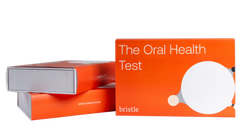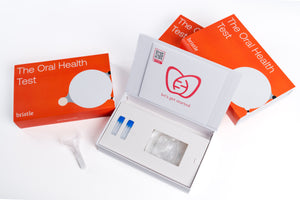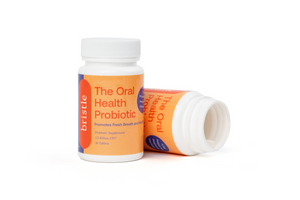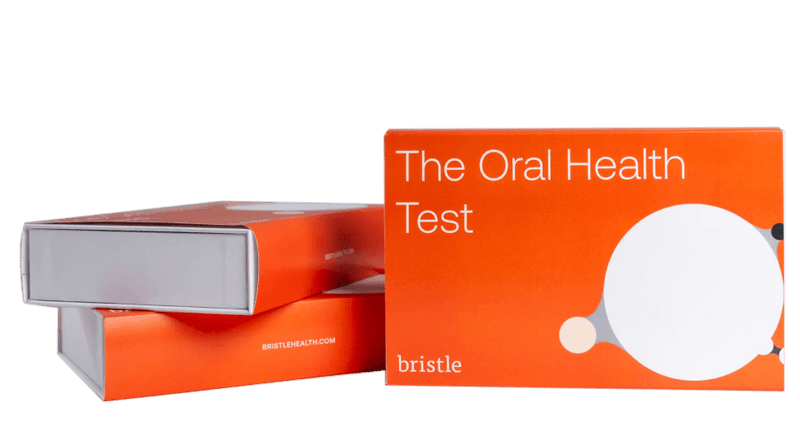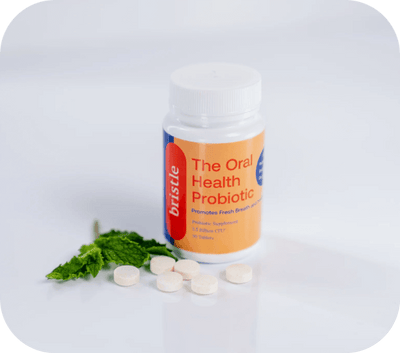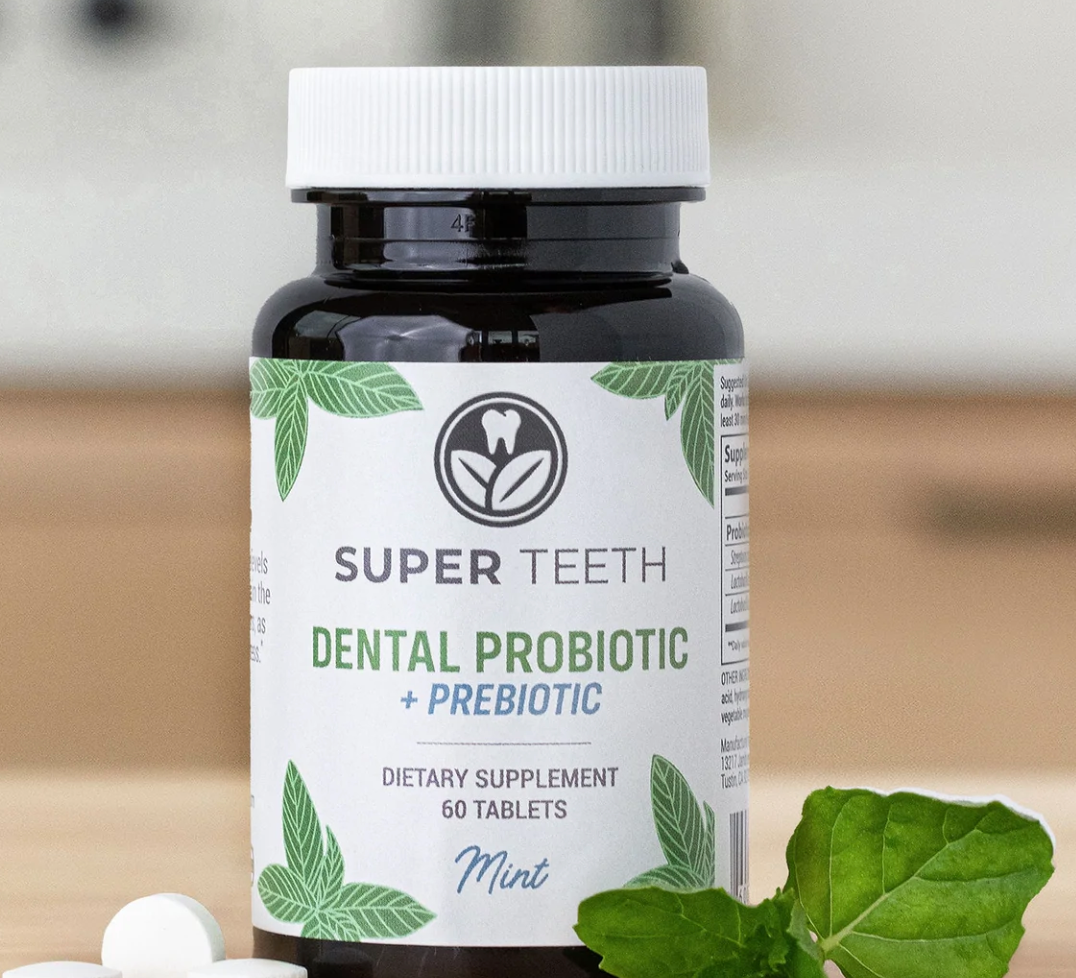Bristle research digests are short research articles that share some of the insights around the oral microbiome and how it impacts health and disease. All data come from Bristle’s internal research, which leverages the Bristle Comprehensive Oral Microbiome Test, a saliva-based at-home test that measures over 30,000 microbes in the oral microbiome using shotgun metagenomic sequencing, and informs users about their oral health status and ways to improve.
Summary
We compared oral microbiomes from people who use electric and manual toothbrushes. We found that people using an electric toothbrush had significantly higher levels of commensal (beneficial) bacteria in their oral microbiome regardless of age, sex, or existing gum disease. Additionally, the use of an electric toothbrush was only beneficial for people who brushed twice a day. Finally, in people under 30, bad breath-causing bacteria were significantly reduced in people using an electric brush, but for people over 30 there was no difference in halitosis scores regardless of brush type.
Study background
Ever wondered if an electric toothbrush is actually better than a manual toothbrush? We decided to look into our data to see if we could find any evidence that one or the other is better.
One previous study observed 2800 patients over an 11-year period, and showed that use of an electric toothbrush marginally improved periodontal health compared to manual brushing [1]. Additionally, in another study of 60 young adults, a powered toothbrush was significantly better at removing plaque than a manual toothbrush [2]. Here, we looked at how type of toothbrush can affect the oral microbiome, which is a primary and critical component of oral disease and health.
We asked 100 people what kind of toothbrush they use, along with questions about age, lifestyle, oral disease, and hygiene. In this study, 42 use a manual brush, 47 use an electric brush, and 11 declined to say. The data below are from the 89 people who responded.
❗ For all of the graphs below: Each dot represents the microbiome scores calculated from a single saliva sample from a different Bristle user. The boxplots show the 25th, 50th, and 75th quantiles for each group. The y axis from each plot shows a different Bristle score, and the x-axis shows self-reported toothbrush type where “Yes” is an electric toothbrush. The dots are jittered for easier visualization.
Using an electric brush is correlated with improvements in oral health
Commensal scores are a single score that measures the levels of beneficial bacteria that are associated with good oral health. Higher commensal scores are better, while lower halitosis, gum inflammation, and tooth decay scores are better.
First, we found that using an electric toothbrush was associated with significantly increased commensal scores. Halitosis, gum inflammation, and tooth decay scores trended toward a decrease, but were not statistically significant.

Next, we looked at potential confounders in our data. In general, we found that younger people benefited more consistently from an electric toothbrush than older people, though the trend held true in both younger and older participants. People under 30 had significantly higher commensal scores when using an electric brush compared to those using a manual one.

We also found that brushing frequency was an important factor. Among people who only brush once per day, we found that people using either manual and electric toothbrushes had similar commensal scores. However, people who brushed twice per day and used an electric toothbrush had significantly better commensal scores than those using a manual toothbrush.

Additionally, existing gum disease slightly influenced response to electric toothbrush use. People with gum disease who use an electric toothbrush had significantly higher commensal scores than those using a manual brush. By contrast, people with gum disease had similar gum inflammation scores regardless of toothbrush type, though people without gum disease trended to have lower scores than those with a manual toothbrush.

We originally found that overall halitosis scores were only slightly reduced in people using an electric toothbrush vs manual. However, upon closer look we found that people under 30 found significant improvement in halitosis scores using an electric brush. By contrast, older people did not have significantly different halitosis scores regardless of brush type.

Discussion
Previous studies have shown marginal improvement in oral health when using an electric brush compared to a manual one. Here we demonstrate that the improvements in health correlate with an improvement in oral microbiome scores. We were also able to show that these improvements may be dependent on other factors such as age and brushing frequency, further improving our understanding of how electric brushes improve oral health and who might benefit most by switching.
The mechanism of these differences is still under investigation. We speculate that an electric brush may be better at disrupting biofilms than a manual brush. As these biofilms grow, they foster an anaerobic environment where slow growing pathogenic species can propagate. Eventually, if biofilms are left undisrupted, periodontal pathogens may find their way to this shelter, replicate, and eventually cause disease. In situations where gum-line biofilms are frequently disrupted, faster growing aerobic and microaerophilic commensal species may be able to fill the niche, and are the first to create biofilm at the tooth surface.
This hypothesis is corroborated by the fact that people who only brush once per day do not see significant improvements in commensal scores regardless of brush type. The frequency of brushing is an important factor for biofilm disruption, as more mature biofilms are notoriously difficult to dislodge. These mature biofilms create anaerobic niche for periodontal pathogens to fill.
Lastly, we found that people under 30 had significantly improved halitosis scores when using an electric brush compared to those using a manual brush. Surprisingly, we did found that people over 30 had no difference in halitosis score regardless of toothbrush type. We’re currently investigating this age-dependent effect, and hopefully will reveal interesting biology about age, lifestyle, and the oral microbiome.
